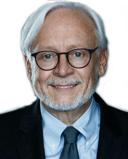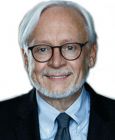Stress
Car Accidents and Collective Posttraumatic Stress Disorder
Can we make a difference?
Posted March 27, 2017
What do we know about car accidents and modern society? We know that injury from auto accidents is a major public health concern. In the United States, there are about six million auto accidents each year resulting in about three million people injured. We know that many people do not do what they can to keep themselves and others safe while driving. For example, even though wearing seatbelts reduces the risk of death or serious injury by roughly 50%, 1 in 7 people still do not wear seatbelts when driving. The major causes of death resulting from auto accidents all involve behaviors that are preventable: alcohol, reckless driving, and speeding.
Even though people are twenty-three times more likely to have an accident when texting and driving, one out of three people still text when driving. In 2012, over four hundred thousand people were injured in the United States due to distracted driving. In that same year, over one hundred and seventy billion text messages were sent in the U.S. (sources: http://www.cdc.gov/Features/dsDistractedDriving and http://www.distraction.gov/ Alarmingly, it takes approximately five seconds to send or receive a text message, during which time an entire football field could have been crossed (source: http://www.driverknowledge.com/car-accident-statistics//).
I can only guess that the number of text messages will continue to increase, as will the number sent and received by drivers. For me, knowledge of these statistics creates greater anxiety about driving, and spurs me to drive more defensively. I increasingly have to watch not only what I am doing when driving, but what everyone else is doing as well, representing a kind of pre-emptive hypervigilance, escalating my overall tension and stress, but however, I believe, increasing my chances of survival.
A case could be made that the irresponsible behaviors in which drivers engage represent a kind of collective insanity. That over 30,000 Americans are killed each year in car accidents no longer shocks the average person is a clear reflection that we have become psychologically numb to the horror, perhaps representative of symptoms of collective post-traumatic stress and dissociation.
Why do people choose to engage in driving behaviors that put themselves and others at risk of serious injury or death? I imagine the answer is a complex one, different for each case, each individual and each occurrence. But there may be general trends. Perhaps it is like asking why do so many deer not stop for cars and get hit. We talk about deer not having evolved to navigate the threat of cars in their environment. Perhaps the same can be said for humans.
The issue of traffic safety is something that should concern all of us, yet until someone is directly touched by an accident it seems all too easy to ignore the threat. Accidents pose both physical and psychological threats. Often the psychological injuries resulting from car accidents are more severe than the physical injuries. Car accidents are the leading cause of posttraumatic stress disorder. Depression, panic and anxiety disorders are also common resulting conditions.
Possibly as a species we have developed the mental equivalent of denial regarding the real dangers posed by irresponsible, negligent driving behavior. Perhaps the answer to so many deaths and injuries from road accidents rests in the words of Mahatma Gandhi. “Be the change that you wish to see in the world.”
And then there is education. As Nelson Mandela said, “Education is the most powerful weapon which you can use to change the world.” In 1913 the National Safety Council was founded and in 1953, received a U.S. Congressional charter in the words of President Dwight D. Eisenhower to “…arouse and maintain the interest of the people of the United States…in safety and in accident prevention, and to encourage the adoption and institution of safety methods by all persons, corporations, and other organizations.” Since 1964, NSC created the first defensive driving course which can now be completed as an online course. Some insurance companies even reduce insurance premiums for policyholders who take the course.
June is national safety month. I would like to throw down a 90-day challenge to everyone who reads this. Let’s all take the online defensive driver course offered by the National Safety Council by June 1. As we move into the high-volume summer road traffic, let’s see if we can make a difference and save some lives by becoming better defensive drivers. We must always remember Margaret Mead’s iconic words, “Never doubt that a small group of thoughtful, committed, citizens can change the world. Indeed, it is the only thing that ever has.”


